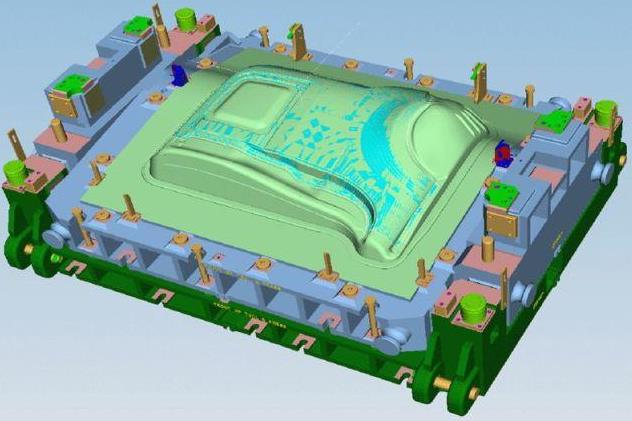
 English
English  Español
Español Português
Português русский
русский Français
Français 日本語
日本語 Deutsch
Deutsch tiếng Việt
tiếng Việt Italiano
Italiano Nederlands
Nederlands ภาษาไทย
ภาษาไทย Polski
Polski 한국어
한국어 Svenska
Svenska magyar
magyar Malay
Malay বাংলা ভাষার
বাংলা ভাষার Dansk
Dansk Suomi
Suomi हिन्दी
हिन्दी Pilipino
Pilipino Türkçe
Türkçe Gaeilge
Gaeilge العربية
العربية Indonesia
Indonesia Norsk
Norsk تمل
تمل český
český ελληνικά
ελληνικά український
український Javanese
Javanese فارسی
فارسی தமிழ்
தமிழ் తెలుగు
తెలుగు नेपाली
नेपाली Burmese
Burmese български
български ລາວ
ລາວ Latine
Latine Қазақша
Қазақша Euskal
Euskal Azərbaycan
Azərbaycan Slovenský jazyk
Slovenský jazyk Македонски
Македонски Lietuvos
Lietuvos Eesti Keel
Eesti Keel Română
Română Slovenski
Slovenski मराठी
मराठी Srpski језик
Srpski језик
Springback Analysis of Automotive Stamping Dies
2023-09-19
Factors affecting the rebound of stamping parts
1. Material properties
There are stamping parts with different strengths on the car body, ranging from ordinary plates to high-strength plates. Different plates have different yield strengths, and the higher the yield strength of the plates, the more likely they are to experience rebound.
The material of thick plate parts is generally hot-rolled carbon steel plate or hot-rolled low alloy high-strength steel plate. Compared with cold rolled sheet metal, hot rolled thick sheet metal has poor surface quality, large thickness tolerance, unstable material mechanical properties, and lower elongation
2. Material thickness
During the forming process, the thickness of the sheet metal has a significant impact on the bending performance. As the thickness of the sheet metal increases, the rebound phenomenon gradually decreases. This is because as the thickness of the sheet metal increases, the materials involved in plastic deformation increase, and thus the elastic recovery deformation also increases. Therefore, the rebound decreases.
With the continuous improvement of the material strength level of thick sheet metal parts, the problem of dimensional accuracy caused by rebound is becoming increasingly serious. Mold design and later process debugging require an understanding of the nature and size of rebound in the parts, in order to take corresponding countermeasures and remedial plans.
For thick sheet metal parts, the ratio of bending radius to plate thickness is generally very small, and the stress and its variation in the direction of plate thickness cannot be ignored
3. Part shape
There are significant differences in springback between parts of different shapes. For parts with complex shapes, a sequence of shaping is usually added to prevent springback if the forming is not in place. However, for some special shaped parts, such as U-shaped parts, springback compensation must be considered during the analysis of the forming process.
4. Part blank holding force
The process of blank holding force stamping is an important technological measure. By continuously optimizing the blank holding force, the direction of material flow can be adjusted and the internal stress distribution of the material can be improved. An increase in blank holding force can make the drawing of the part more complete, especially at the position of the side wall and R angle. If the forming is sufficient, it will reduce the difference in internal and external stress, thereby reducing rebound.
5. Stretching tendon
Drawing ribs are widely used in today's processes. Reasonably setting the drawing position can effectively change the direction of material flow and distribute the feed resistance on the pressing surface, thereby improving material formability. Setting drawing ribs on parts that are prone to rebound can make the forming of parts more complete, stress distribution more uniform, and thus reduce rebound.



